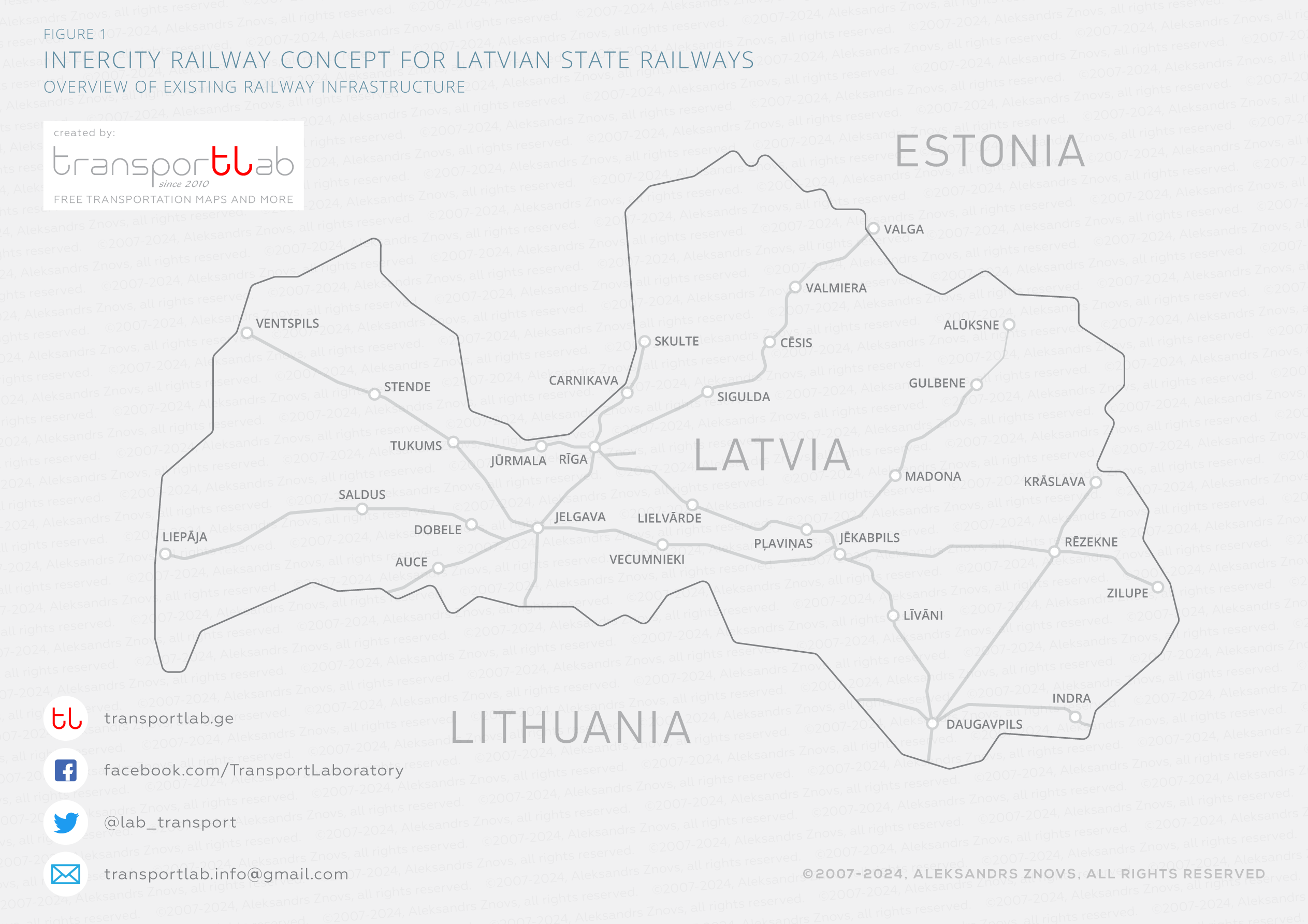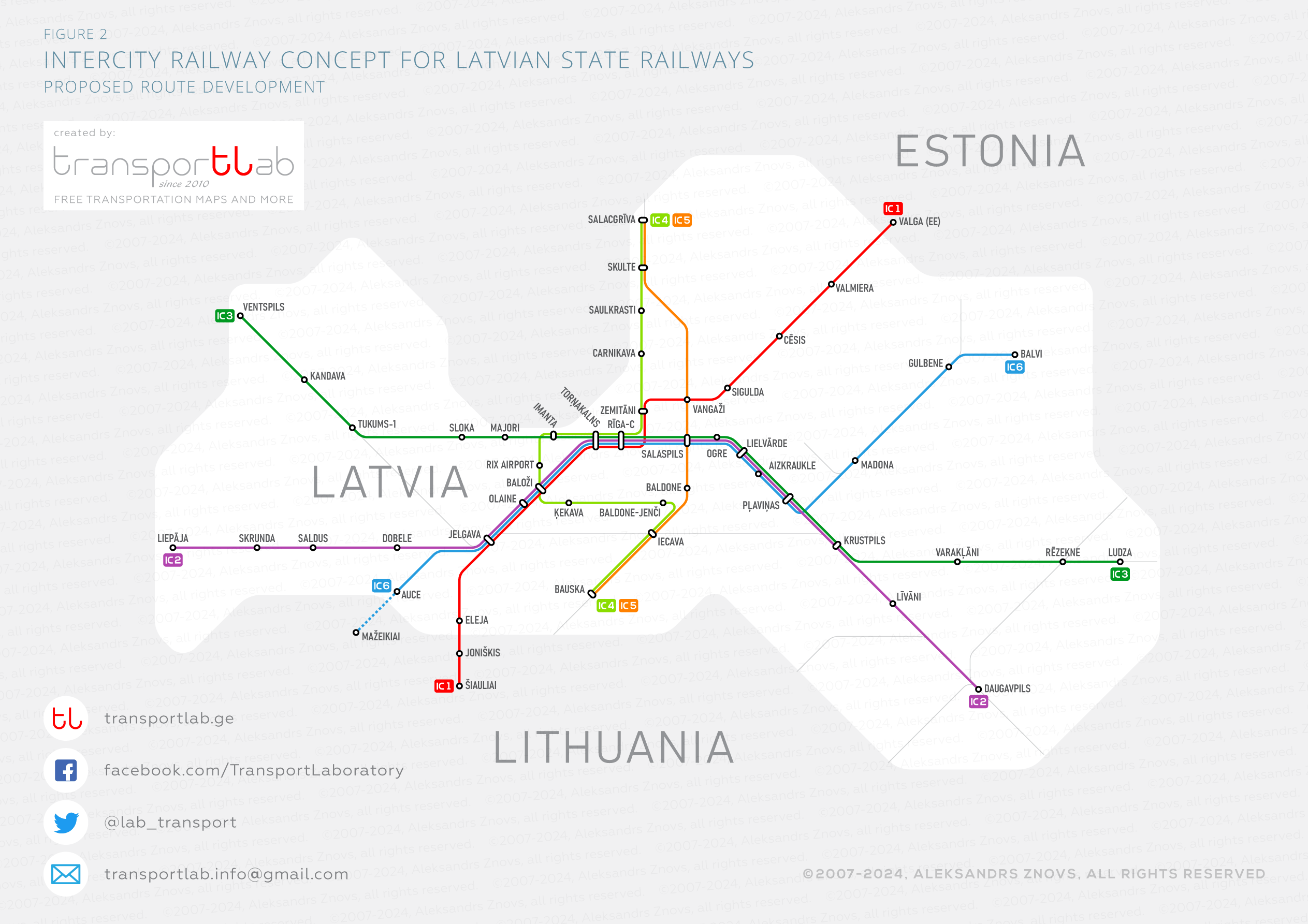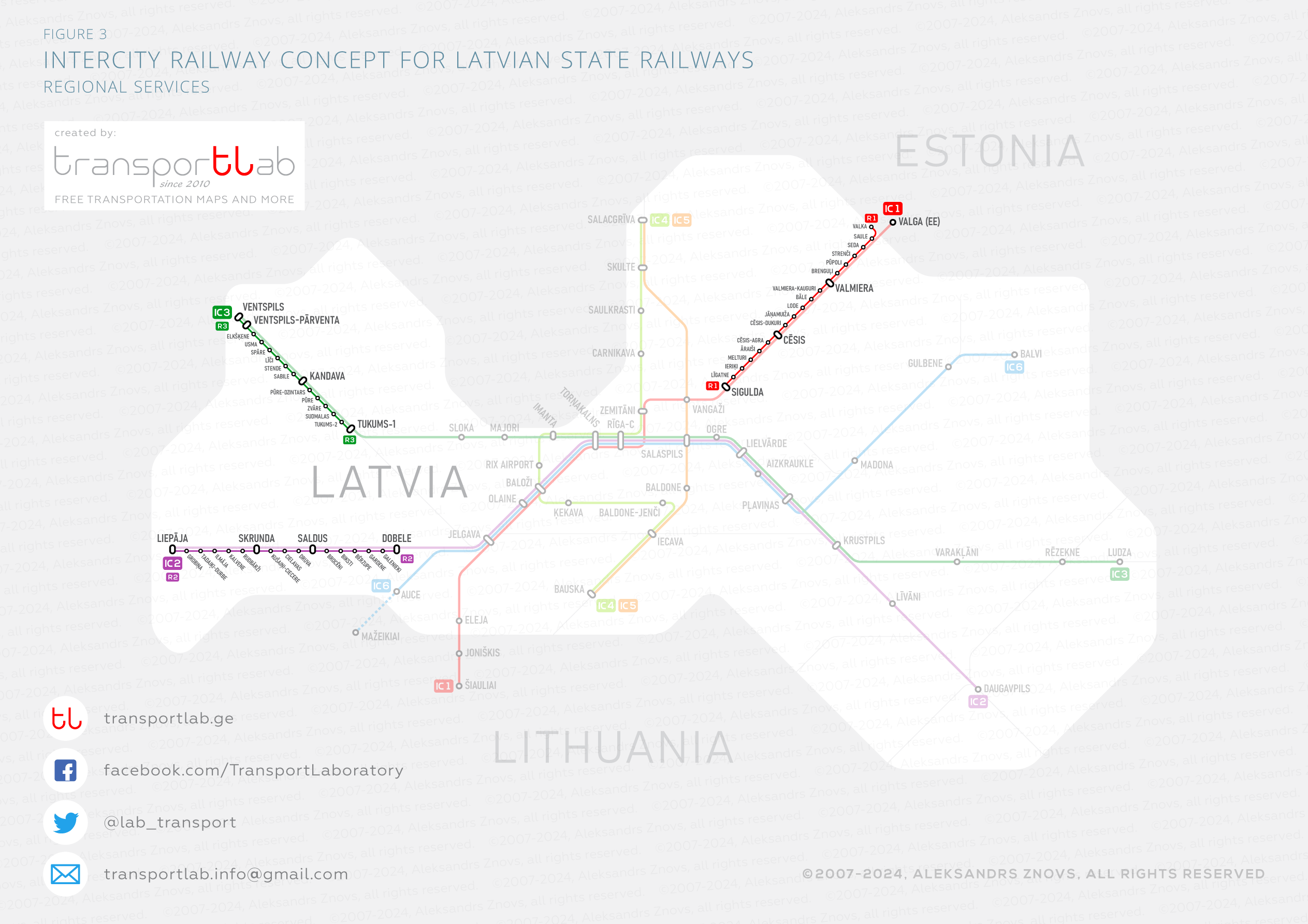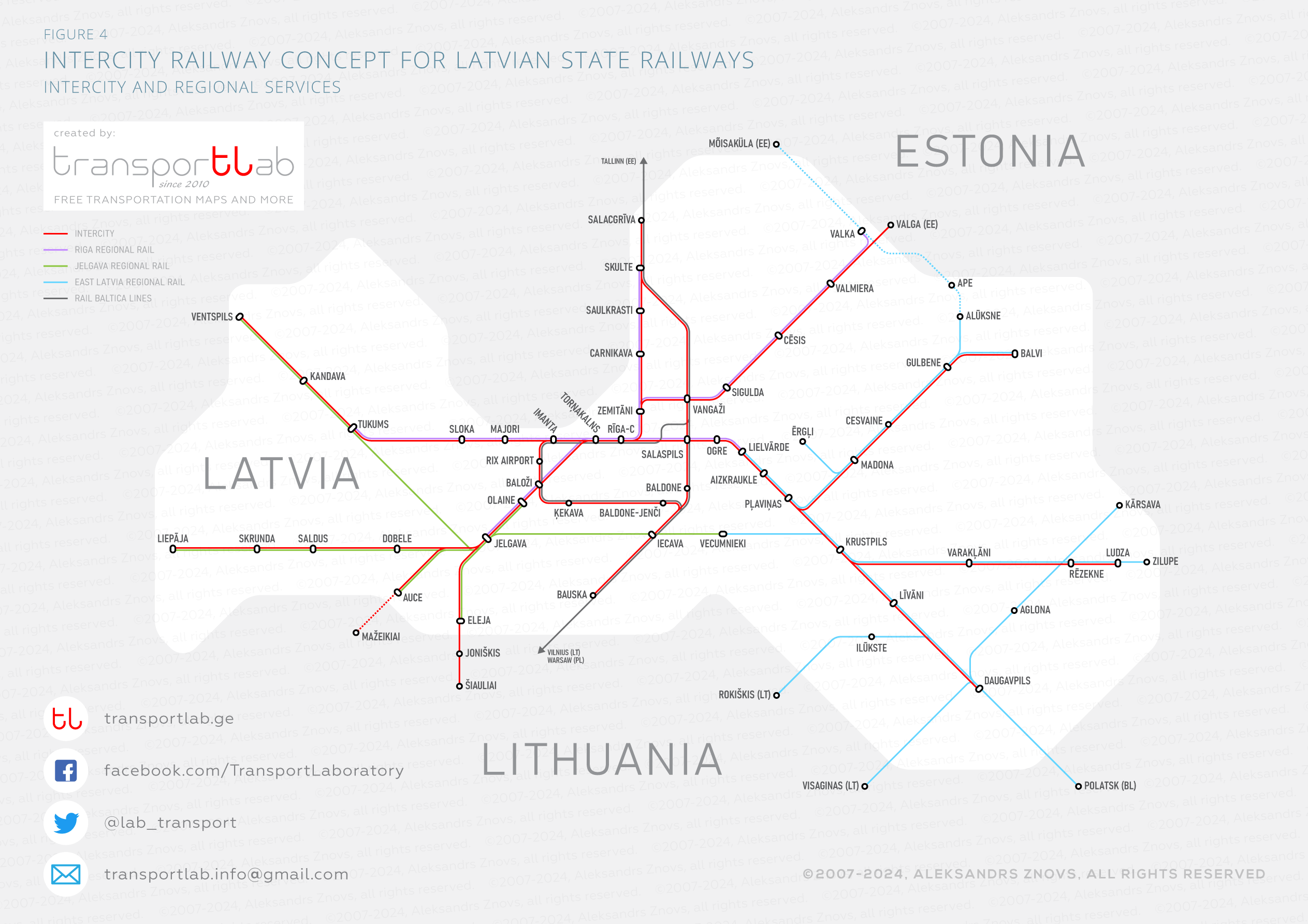In my previous articles, we have already considered options for how to decentralize the Latvian railway network and to create optimal route net locally and regionally. In my whole vision, I noted it is quite enough to divide the responsibility for regional passenger transportation into three large regional branches. Let me remind you, one part of my idea was the vision of Eastern Latvia Regional Rail. You can read about it here. But the regional transportation in the central part of the country could be a subject of the responsibility of Riga Regional Railway and Jelgava Regional Railway. Recently I posted two large, detailed and juicy illustrated articles about this concept, so you can find them here and here. Please consider to check these articles for better understanding the whole concept. Except for the article about the Liepaja City Rail, I didn’t pay appropriate attention to the Kurzeme Region – the western part of Latvia. Same I did not touch the theme of cross-country regional express. That’s what I am going to talk about in this article.
So, we have three railway systems for all regional purposes, let’s set aside them all and create the concept of a regional express network. We can name this service ‘InterCity’ – a widely used term for interregional express train networks in many countries. I hope it is clear to everyone, that these trains are purposed to connect the largest cities and towns. The whole existing railway network of Latvia is like we can see in Figure 1.
First of all, before making a first sketch of the InterCity network, we have to remember what railway lines are already supposed to be served by the regional railway networks, which I mentioned above. Same we have to take into consideration the new railway line of RailBaltica which is still under construction. As you can see in Figure 2, all routes would pass through the Latvian capital.
Let’s take a detailed look at each proposed route of this diagram. The first one – InterCity (IC) Line 1 could begin in the Estonian border town Valga, then pass the Valmiera, Cesis, Sigulda, Riga, and Jelgava till the terminus in Lithuanian town Siauliai.
IC Line 2 could start from the town of Liepaja and reach the second largest city in the country, Daugavpils. Intermediate stops: Saldus, Dobele, Jelgava, Riga, Ogre, and Jekabpils (Krustpils Station).
IC Line 3 would connect the town of Ventspils with the Kandava, Tukums, Jurmala, Riga, Ogre, Jekabpils and would go to Rezekne and Ludza in Eastern Latvia.
IC Line 4 would partially use the existing infrastructure and the new RailBaltica Line. This route would connect the town of Salacgriva with the city of Bauska. On its way, the train will terminate at Saulkrasti, Carnikava, Riga, Riga International Airport, Kekava, Baldone and Iecava.
IC Line 5 would fully use the infrastructure of the RailBaltica Line. This route, as well as Line 4, would connect Salacgriva and Bauska, but will pass by the capital of Latvia on the east. Between the stations of Baldone and Skulte, the train would have two stops – Salaspils and Vangazi. There will be possible to transfer to almost all IC and some regional lines.
Well, the last IC Line 6 would start in Balvi and take the passengers to Auce. Intermediate stops: Gulbene, Madona, Aizkraukle, Ogre, Aizkraukle, Riga and Jelgava. Additionally, if the municipality of the Lithuanian town of Mazeikiai will be interested in a direct passenger rail connection with the Latvian railway network, this route may be extended.
As you probably noticed, the network is quite simple and convenient. Besides, it follows the principle of decentralization, which will help to unload the Riga Central Station. You have already noticed that thin grey lines are visible on the diagram. They indicate lines with lower passenger capacity, which are already supposed to be served by regional rail networks. Nevertheless, there are remaining three sections left that, according to the whole concept, haven’t been mentioned. These are the Venspils-Kandava-Tukums, Dobele-Saldus-Liepaja and Sigulda-Valmera-Valga sections.
To avoid creating additional managing units and maintenance depots, these sections can be transferred to the respective nearby branches: the Riga Regional Railway could serve Sigulda-Valga Section, but the Jelgava Regional Railway would manage the two remaining ones: Tukums-Jelgava and Jelgava-Krustpils sections.
Well, now I can say with confidence: the topic of the concept of the nationwide railway system of Latvia is closed and all services I have proposed in all four articles you can see in the Figure 4 below. Frankly speaking, I am not the only one who raises the topic of convenient rail transport for Latvian inhabitants. I can only hope our politicians will someday listen to people like me and switch their thinking about their pockets to something more beneficial for the folk. At least during working hours.
Title image credit: screenshot of video by Armo V














[…] To read about the other Latvia’s broad-gauge rail networks you can here, here, here and here. Now let’s take a more detailed look at my vision. I overlaid all my proposed lines on a […]